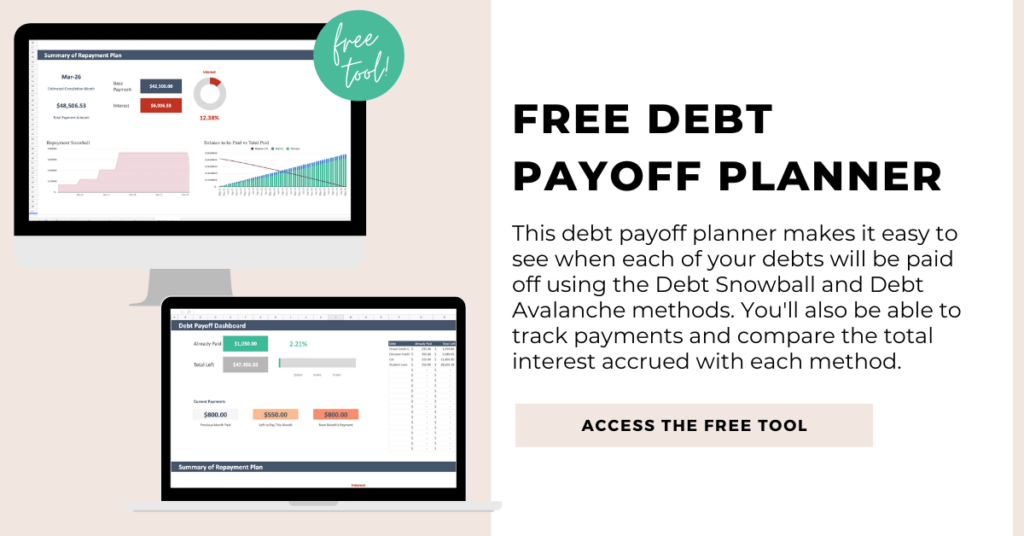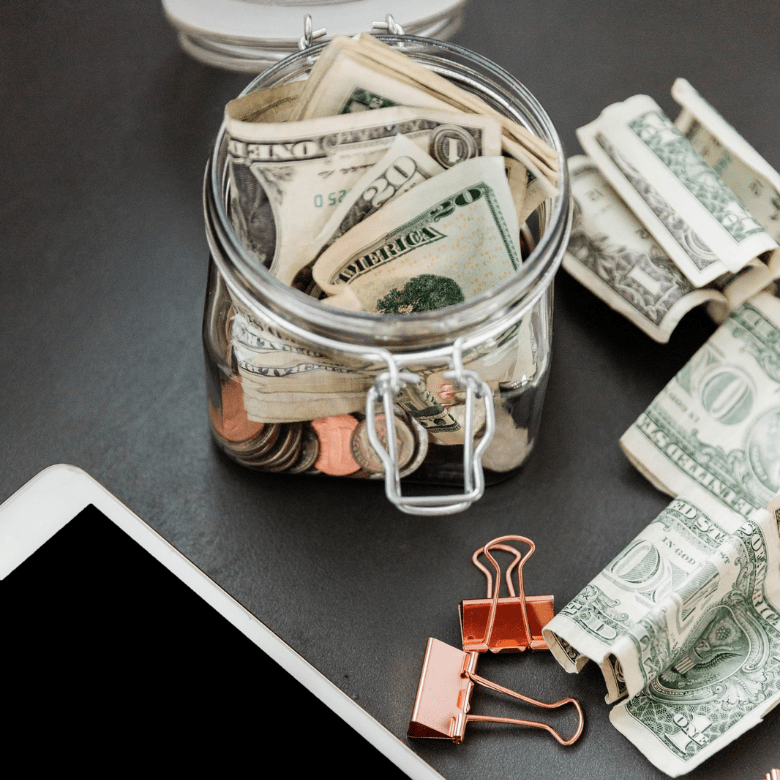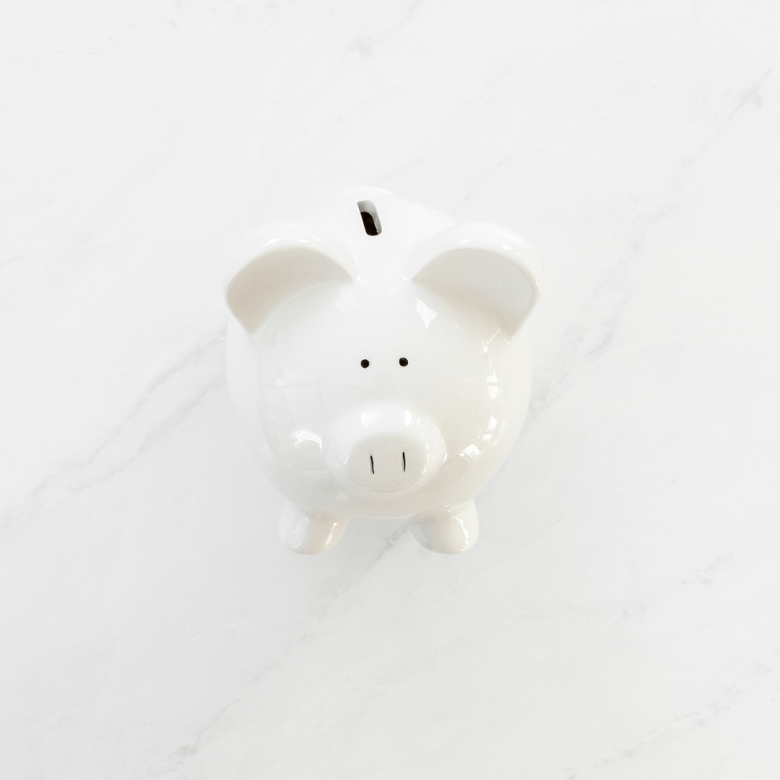12 Tips for Paying off Student Loans Quickly
College is expensive; there’s no doubt about it. Most students can’t cover the full cost of attending college and, even after scholarships and grants, need student loans to offset the costs. Student loans are money borrowed from either the government (federal loans) or a private lender (private student loans).
Today the average cost of a college education is $32,889 per year. You can save money by attending a state school, which averages $25,396 per year, versus a private school, which averages $53,102 per year.
The average graduate leaves college with $37,584 in student loans. If this sounds like you, check out these strategies to pay off your student loans faster.
Some of the links in this post are affiliate links. We may receive compensation when you click on links to products at no extra charge to you. View our full disclaimer.
Use These 12 Tips for Paying off Student Loans Quickly
1. Pay More Than the Minimum
Just like credit cards, your student loans have a minimum payment; however, if you only pay the minimum payment each month, it will take you longer to pay off the loans. If you want to get ahead, consistently pay more than the minimum due (e.g., every month, if you can).
You don’t have to commit to a set amount above your minimum payment. As long as you make the minimum payment every month, whatever extra amount you decide to put toward your monthly payment is up to you. The more you pay early on, the less interest you’ll owe over the life of the loan, which helps to pay off the loan faster.
2. Avoid These Repayment Plans
Income-based repayment plans seem like a great deal because they lower your payment according to what you can afford, but they aren’t all they’re cracked up to be.
If you take any of the four repayment plans, your repayment term extends up to 25 years. This extension means you’ll pay a lot more in interest over the life of the loan. At the end of your term, the government forgives whatever amount due remains; however, you’ll still owe taxes on the forgiven amount.
It may sound like a great deal to have a lower monthly payment that’s easier to afford, but the cost over the life of the loan is much more than you would pay if you made the standard payments.
3. Enroll in Auto Pay
If you set up auto-pay right from the start, you’ll get a 0.25% reduction in your interest rate. While it won’t save you a ton of money, every little bit counts. For example, if you borrow $20,000 and you lowered your rate from 4.25% to 4.0%, you’d save $286 over the life of the loan. It’s not a ton, but every dollar helps you get closer to your goal of paying off your student loans faster.
4. Make Bi-Weekly Payments
If you can’t trust yourself to make extra payments regularly, make it easier on yourself by making bi-weekly payments. Without really thinking about it or actively coming up with extra money, you’ll make an extra monthly payment and knock both interest and time off of your student loan debt.
Here’s how: Take your standard payment and divide it in half. Pay half of your standard payment one week and the other half two weeks later. You’ll pay the same amount each month; however, because you pay every two weeks rather than once a month, in a year, you’ll have made 26 weekly payments, which translates into 13 monthly payments.

5. Bank Your Windfalls
A great way to get ahead of student loan debt is to bank your windfalls. Think about all of the times you come into money throughout the year. Tax refunds, rebates, work bonuses, or large commission checks find their way out of our wallets just as fast as they find their way in.
What if, instead of putting your windfalls into your checking account to spend, you put the money toward your student loan debt to pay it off faster?
When you knock off a few hundred or a few thousand dollars off your principal, you pay much less interest over the life of the loan, and you may even pay it off faster.
6. Pay Interest While You’re in School
Even though you don’t owe any payments while you’re in school or in any type of deferment, you should consider paying at least the interest during this time. If you don’t make at least this minimum payment, the interest capitalizes, which means the lender adds it to the back of your loan.
When you start making payments again, you’re paying interest on a much larger balance. Your loan costs you much more overall, and it may take you longer to pay off student loans than you’d like.
7. Take Advantage of Tax Deductions and Credits
You can deduct up to $2,500 in interest paid on student loans on your tax returns. You may only deduct interest paid on qualified student loans (federal and private loans) for you, your spouse, or dependent children.
The student must be enrolled at least half-time during the period the loan was for, and it must be used for tuition, room and board, or other qualifying higher education expenses to qualify.
You may also be eligible for a $4,000 tuition and fees deduction if you’re actively in school. You may only take the deduction if you attended school this year, unlike the student loan interest deduction that you can take for every year you pay interest.
8. Start a Side Hustle
If you’ve budgeted every dollar and don’t have any extra money to pay off your debt faster, consider starting a side hustle.
Today there are hundreds of side hustles you can conduct from the comfort of your own home, such as graphic design, freelance writing, creating podcasts, starting an e-commerce store, or transcription. If you like to make money while you’re out-and-about, consider side hustles like Uber, DoorDash, Rover, or Instacart.
Any money you make from your side hustle, put toward your student loan debt to pay off your debts faster.
9. Refinance Student Loans
If you’ve exhausted all federal help, and want a lower payment, consider refinancing your student loans. With today’s low interest rates, you may be able to save money on interest and even secure a shorter term loan.
If you have a great credit score when you apply to refinance your student loans, you’ll get the best interest rates. Even if you can knock a year or two off of your loan, you’ll save yourself money on interest and have the student loan debt behind you.
Click here to refinance your student loans with Sofi, or read my Sofi review.
10. Check Your Employee Benefits
Some employers offer student loan repayment assistance. Check with your employer to see what they may offer or think about negotiating student loan repayment assistance into your benefits package when you start a new job.
11. Cut Your Expenses
If you want to pay student loans off fast, you need a budget. When you create your budget, see where you overspend and where you can cut back. Categorize your expenses over the last year by looking at your bank statements. Do you see areas where you spend too much and could save more money?
Even if you can only save $50 or so a month and put it toward your student loan debt, that’s an extra $600 a year. If you do this consistently, it will help you get out of debt faster and optimize your personal finances.
12. Stay Consistent
No matter which method you choose above, the key is consistency. If you choose to make extra payments, try to do it every month. If you cut your expenses, make sure you direct the funds to your student loans. And if you start a side hustle or commit your windfalls to your student loans, do it consistently.
The more consistent you are in your efforts, the more likely you are to get out of student loan debt faster.
Paying off Student Loans Quickly Isn’t as Hard as It Seems
Drowning in student loan debt doesn’t have to last forever. Even though it feels like there’s no light at the end of the tunnel, there is—if you make some quick and consistent changes.
Start early by budgeting and finding extra money to pay toward your debt. Take extra steps to find help to pay off your student loan debts faster. Use methods that help you save the most money overall and get yourself out of student loan debt.







